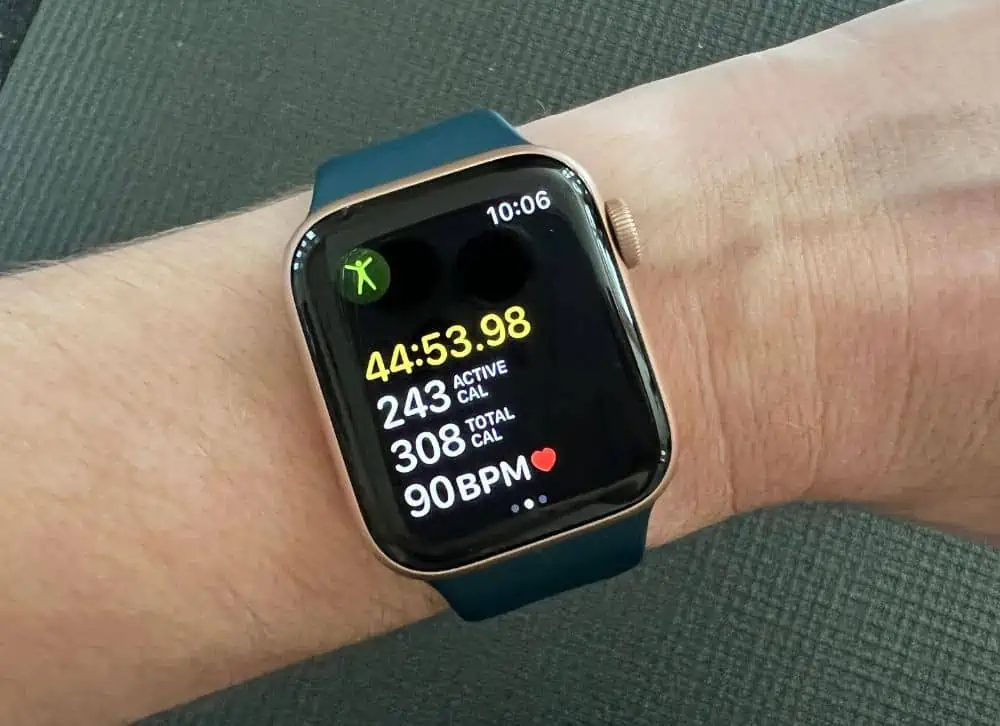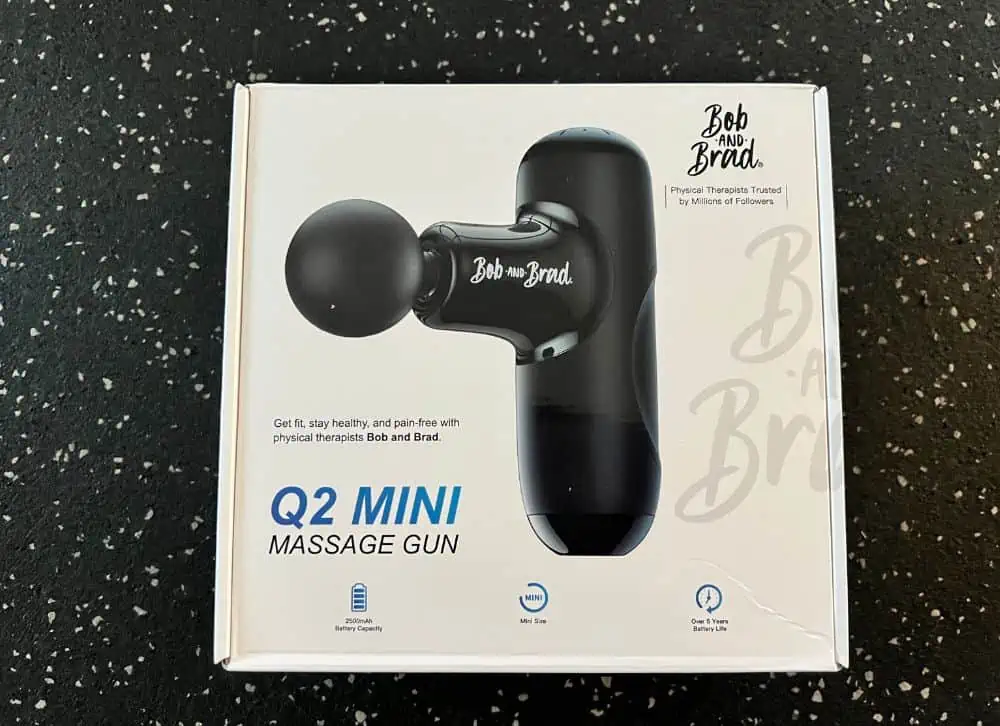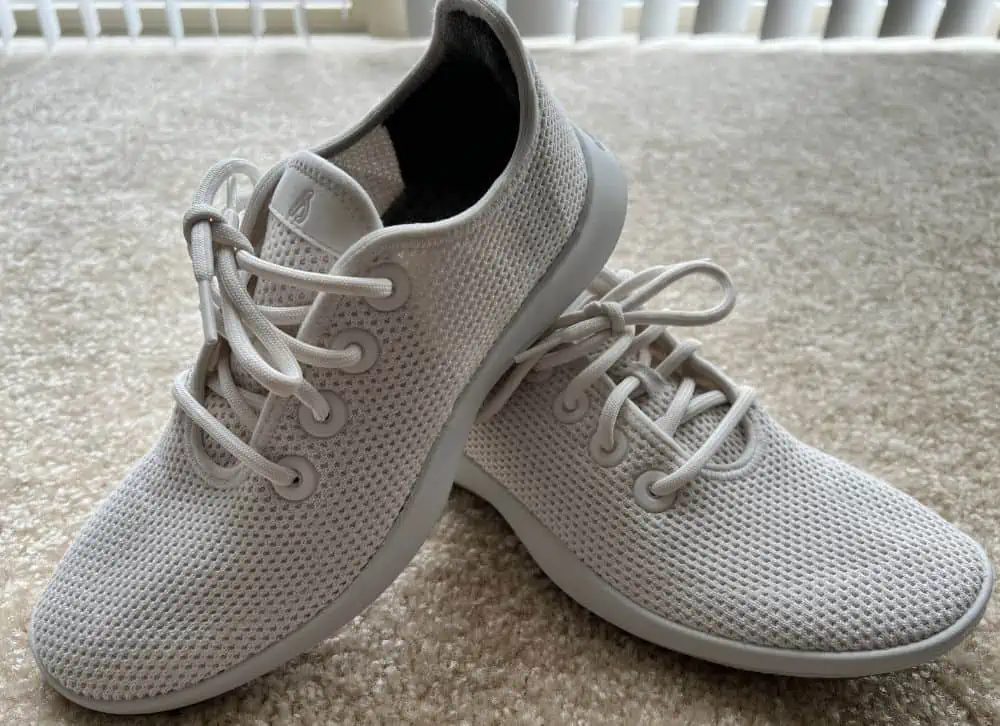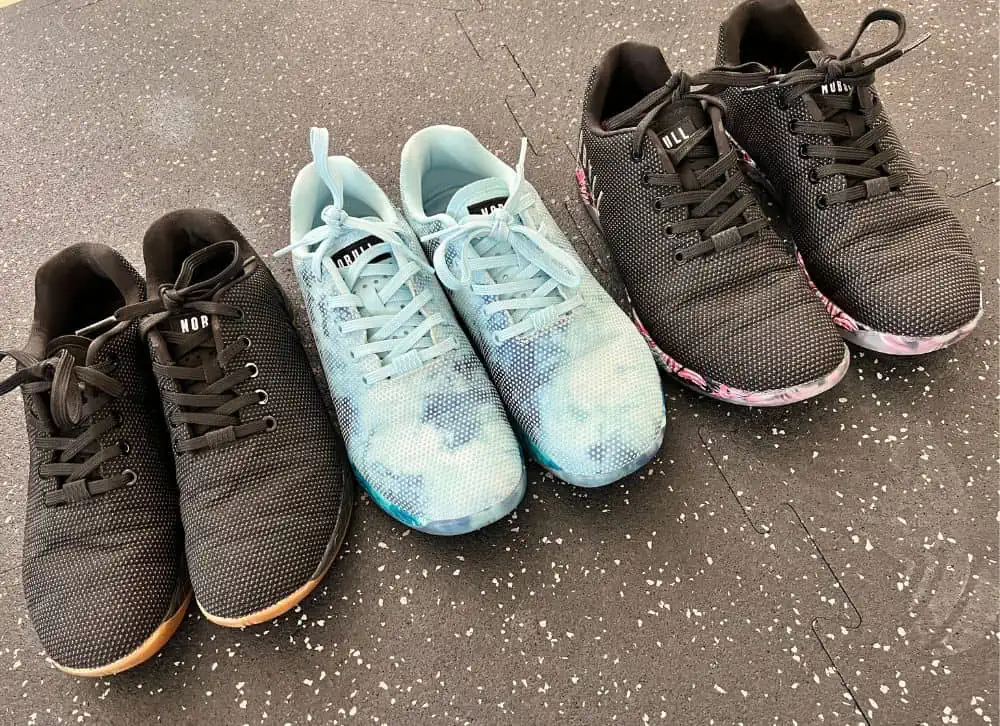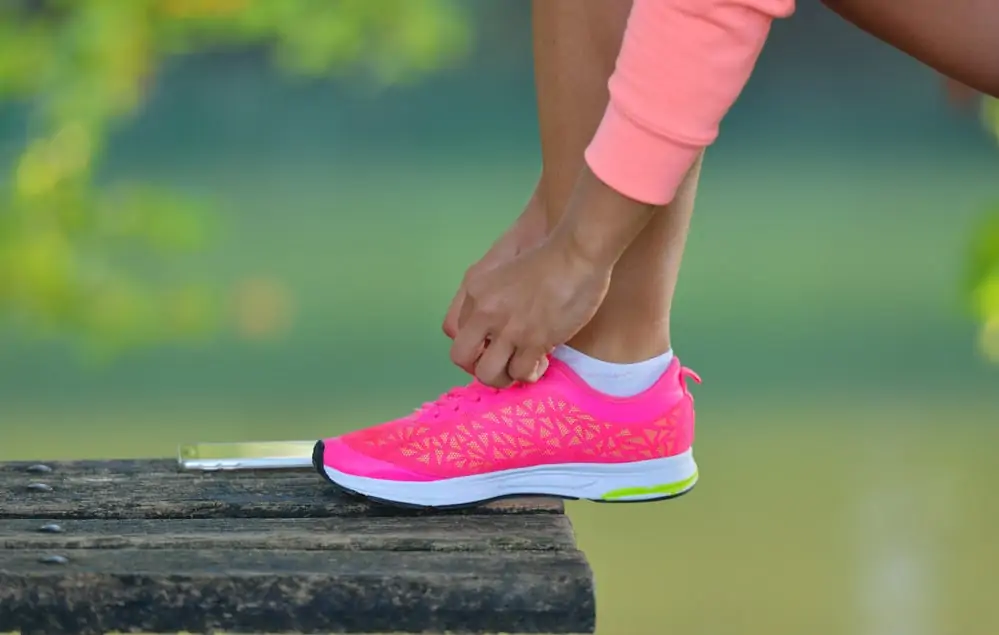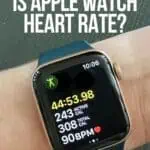This post may contain affiliate links. If you click through a link and make a purchase, I may receive a commission at no additional cost to you. As an Amazon Associate, I earn from qualifying purchases. Read the full disclosure here.
I’ve been using an Apple watch for over 5 years and have even been known to test multiple heart rate watches simultaneously to compare. If you’ve just spent a few hundred bucks and are wondering how accurate is Apple Watch heart rate, you’ve come to the right place.
Spoiler alert. Not all wearable fitness trackers are created equally.
In general, I’ve found the Apple Watch heart rate tracking very accurate for rhythmic activities like walking, running, and the elliptical as well as relatively stable tracking for light weight lifting, yoga, Pilates, and barre fitness. For me, it tends to lose its accuracy when it comes to more erratic movements like cardio kickboxing and fast arm movements.
In this article, I’ll break down all of your questions on how accurate the Apple watch heart rate really is, plus my secret to making your Apple watch even more accurate by pairing it with the Polar H10 chest strap.
Disclaimer: This content is for educational purposes and is not medical advice. Read the full disclaimer.
How does the Apple watch track heart rate?
The Apple watch tracks heart rate using an optical sensor and a process called photoplethysmography.
Green LED lights paired with photodiodes detect the amount of blood flowing through the wrist. Blood pumping through the arteries will absorb more green light, refracting less light back to the wrist tracker, translating into beats per minute.
Apple also states that the watch is designed to compensate for low signal by increasing the LED brightness and sampling rate.
The Apple watch captures your resting heart rate several times per day; however, when you start the workout function, it monitors your heart rate continuously throughout your exercise session.
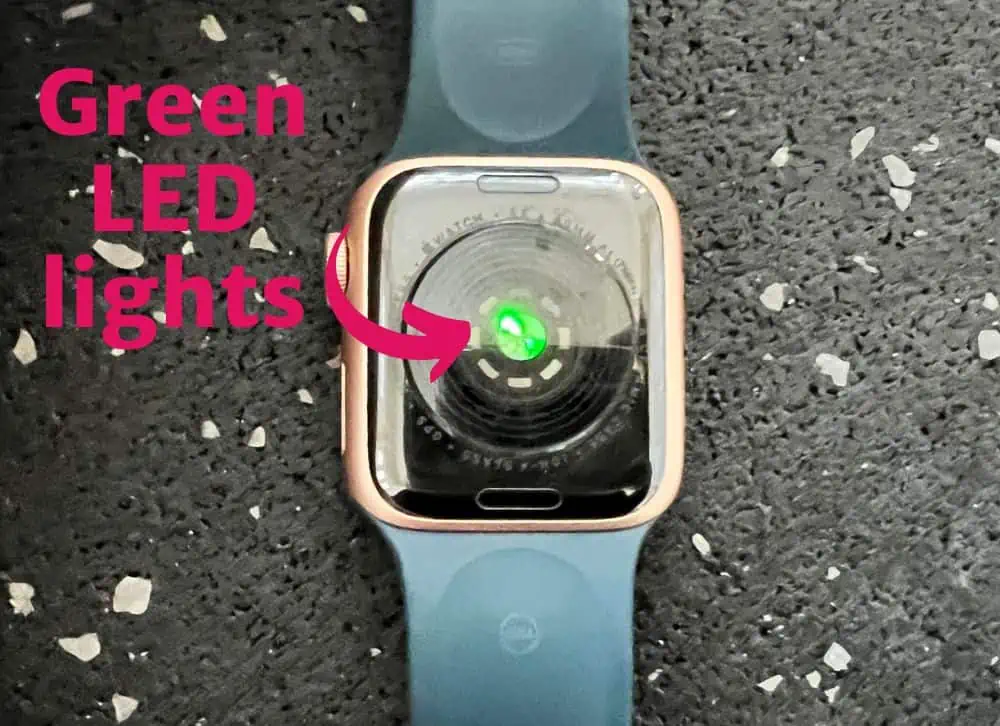
What affects heart rate measurement on Apple watch?
Wrist trackers are relatively accurate at rest and decrease with certain activities.
In general, wrist-worn devices are found to be more accurate with rhythmic activities such as walking or running and less accurate with more erratic movements, such as punching during a kickboxing class.
The number, size, and location of the green lights under the watch may affect the accuracy of the Apple watch.
I’ve noticed my old Apple watch 2 was much less accurate than my current Apple watch SE for some activities. I suspect it has something to do with the size and configuration of the lights, as well as the improvement in technology, like increasing the LED brightness to compensate.
The success of the monitoring is dependent upon the physics of the green LED light. Several factors can affect the ability to clearly detect absorbed and refracted light.
Not specific to the Apple watch, only wrist-worn technology in general, but Shcherbina, A. et al. found higher device error with increased body mass, darker skin tones, and the presence of tattoos on the wrist, heavy arm hair, or sweat.
Basically, anything that has the ability to impede or absorb the green light will affect the reading.
Lose contact with the skin is also another easily fixable issue for tracking heart rate. During workouts, make sure the watch is strapped down snugly but comfortably for optimal contact with the skin.
How accurate is Apple watch heart rate?
For reference, I’ve had an Apple watch series 2, series 3, and currently, an Apple watch SE. I’ve also tried Fitbit and Polar fitness trackers, and for about ten years, exclusively used a Polar FT4 watch paired with a chest strap for monitoring.
(The Polar FT4 system was great if you want accurate workout readings but don’t want to commit to a smartwatch.)
In my experience, the Apple watch’s heart rate has been very accurate for most types of exercise.
My experience has been similar to the findings in the research, being most accurate in capturing and maintaining heart rate with rhythmic activities and less accurate for more erratic movements.
(This is not a knock to Apple, just rather the limitations of tracking heart rate via wrist detection.)
I get a consistent connection with an accurate heart rate with activities like walking, running, using the elliptical, and weight lifting.
I notice the most difficulty maintaining an accurate heart rate connection with more erratic upper body movements like during Les Mills Body Combat or Body Attack. Occasionally in Body Combat, the heart rate will even skyrocket if there’s a quick round of punches.
It also seems to have difficulty maintaining a reading, but after 10-15 minutes seems to “catch on” to what’s going on. Perhaps this is the increase in LED strength in response to a low signal that apple refers to. Either way, there was a noticeable improvement in heart rate tracking since the Apple watch 2.
When I know I’ll be doing a workout with lots of arm movements, I usually Bluetooth my Polar H10 chest strap for a more accurate reading.
To determine if the reading you’re seeing is accurate, you can always take your pulse manually to compare it to the heart rate reading.
Over time, you gradually get a feel for how hard you’re working at various heart rates and be better able to judge if the reading looks like it’s close to accurate. Judging by feeling of how hard you’re working is how the RPE scale works.
In a prospective study from 2019 comparing accuracy of commercially available heart rate devices for endurance athletes, the Apple watch was found to be the most accurate watch for guiding workouts and performance, beaten only by the Polar chest strap, which had the greatest agreement with ECG readings. Other watch brands compared in the study included Fitbit, Garmin, and Tom Tom.
How to make your Apple watch even more accurate
Chest straps are still the gold standard for measuring heart rate but are obviously more cumbersome than just wearing a watch.
When I’m looking for solid, accurate heart rate data, I pair my apple watch with the Bluetooth Polar H10 chest monitor. I find this combination gives me the best of both worlds.
Chest-worn heart rate monitoring mimics ECG telemetry. For each heartbeat, electrical impulses are transmitted through the heart. Chest strap monitors pick up these electrical signals through the skin and transmit that data to a paired watch giving real-time heart rate feedback.
Because heart rate is part of the calorie equation, total calories burned during exercise may be more accurate. If your fitness tracker can’t accurately detect heart rate, then everything is made up and the points don’t matter.
The obvious con is that a chest strap isn’t something you would wear all day for activity tracking. For women, a chest strap usually fits neatly at the base of a sports bra and hardly bothers. For men, this can be more of a nuisance.
For directions on how to pair and troubleshoot this combination – read this article.
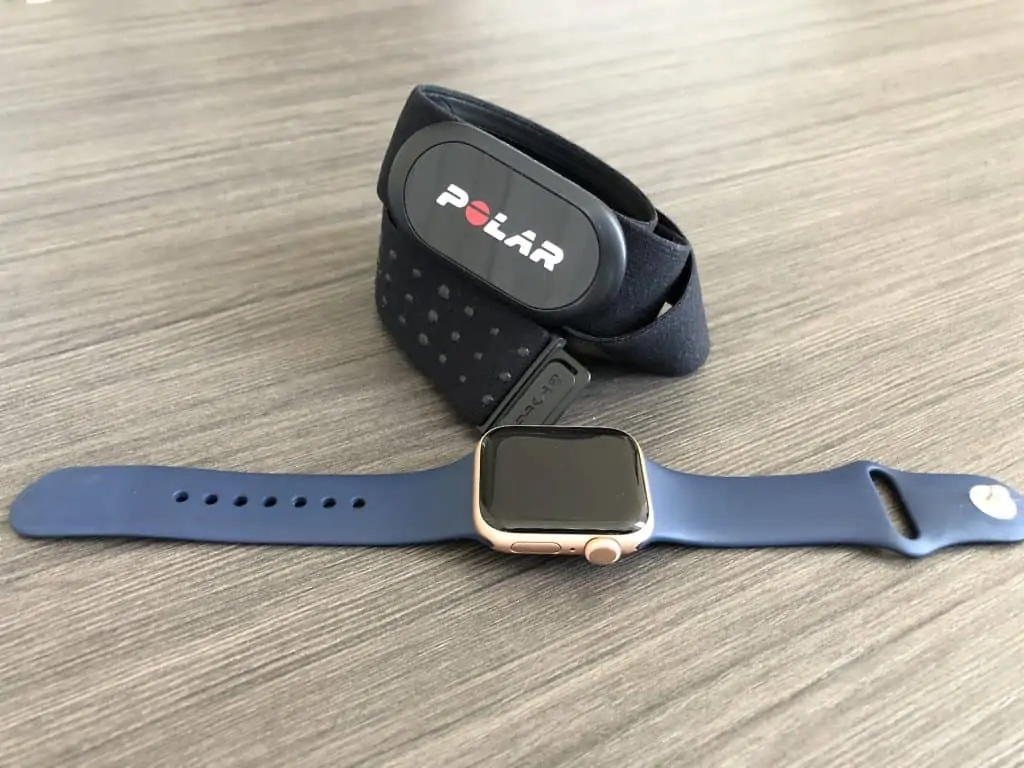
The Apple Heart Study
With each update to the Apple Watch, technology keeps improving.
The Apple Heart Study was a research study conducted between 2017 and 2019 to evaluate whether the Apple Heart Study App can use data collected on the Apple Watch to identify irregular heart rhythms, including those from potentially serious heart conditions such as atrial fibrillation.
The results of the study were positive, demonstrating that the technology did have the ability to identify potentially fatal heart rate arrhythmias.
While this is more in-depth than simple heart rate monitoring for workouts, it speaks to the potential of this technology for overall health, wellness, and heart monitoring.
It’s worth noting that not all models of the Apple watch have this capability. Apple states that to use this technology, you need an Apple Watch Series 4 or later model. You also need at least an iPhone 8 with the latest iOS version to use the ECG app and watch.
Wrapping up
If you’re bothering to use a heart rate monitor during workouts, it’s important that your technology accurately records your heart rate.
As someone who’s more than mildly obsessed with fitness watches, I’ve been super happy with the Apple watch and can vouch for its accuracy most of the time.
For the rest of the workouts, I’ll just link up with my Polar H10 for the best of both worlds.
What do you think of the Apple watch?
References
Parak J, Salonen M, Myllymäki T, Korhonen I. Comparison of Heart Rate Monitoring Accuracy between Chest Strap and Vest during Physical Training and Implications on Training Decisions. Sensors (Basel). 2021 Dec 16;21(24):8411. doi: 10.3390/s21248411. PMID: 34960501; PMCID: PMC8706206.
Pasadyn SR, Soudan M, Gillinov M, Houghtaling P, Phelan D, Gillinov N, Bittel B, Desai MY. Accuracy of commercially available heart rate monitors in athletes: a prospective study. Cardiovasc Diagn Ther. 2019 Aug;9(4):379-385. doi: 10.21037/cdt.2019.06.05. PMID: 31555543; PMCID: PMC6732081.
Shcherbina A, Mattsson CM, Waggott D, Salisbury H, Christle JW, Hastie T, Wheeler MT, Ashley EA. Accuracy in Wrist-Worn, Sensor-Based Measurements of Heart Rate and Energy Expenditure in a Diverse Cohort. J Pers Med. 2017 May 24;7(2):3. doi: 10.3390/jpm7020003. PMID: 28538708; PMCID: PMC5491979.

